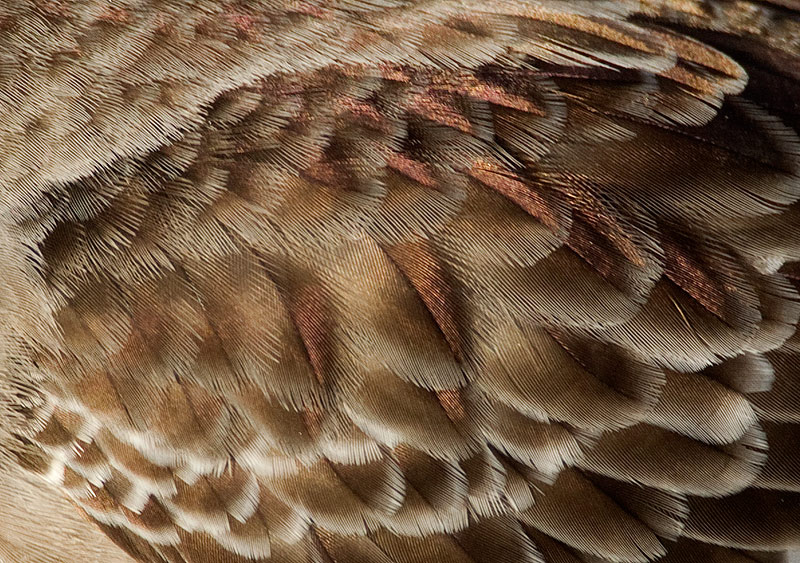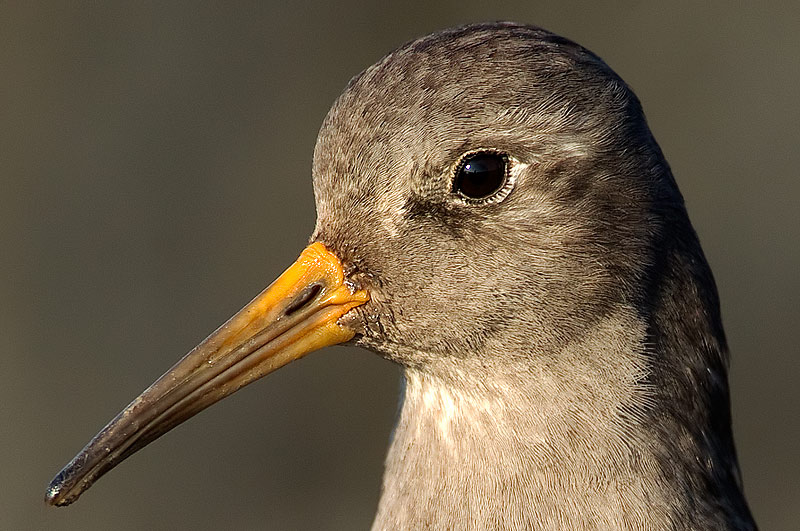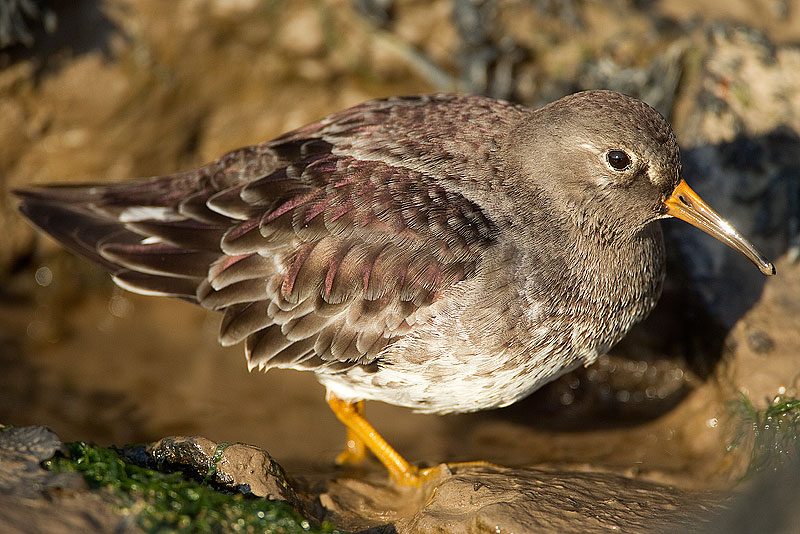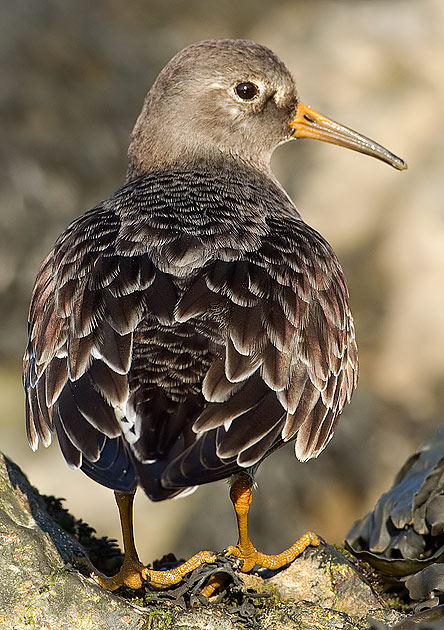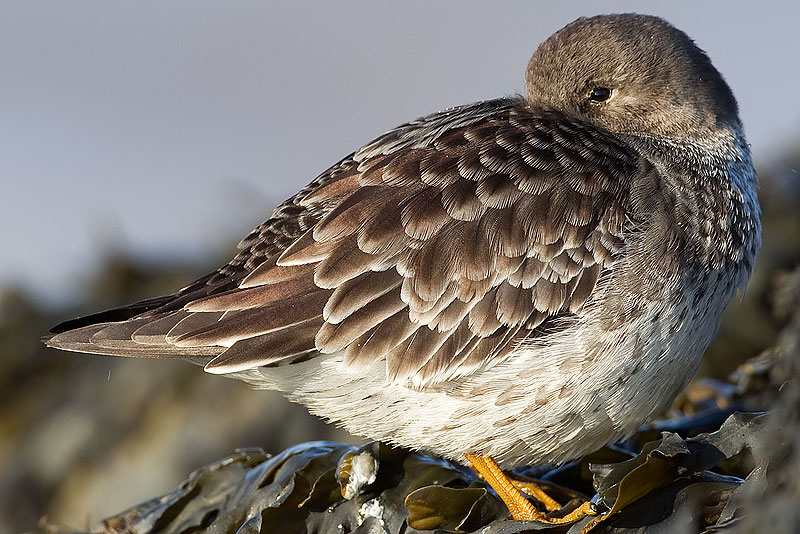February 2012
26th. A morning trip to Severnside. The short-eared owls didn't appear at Aust Wharf during high tide, so I went to New Passage and Northwick Wharf to look for the water pipits that have been seen there. Water pipits have become scarce at Chew and on the Levels, and it's a while since I'd seen one. It took me ages to find 4 birds on Northwick Wharf saltmarsh. There were lots of meadow pipits and pied wagtails present, and eventually I picked up a water pipit feeding in a creek at several hundred metres range in heat haze. I managed to get some decent views - the record shot below shows the greyish-brown back colour, prominent supercilium, little streaking on the back, dark legs and white outer tail feathers. A bar-tailed godwit fed on the estuary. I later saw a kingfisher and a chiffchaff at Avonmouth Square Pool.

19th. Not content with my earlier views of the common yellowthroat, I returned to Rhiwderin in sunshine to get another look. A peregrine flew over the Second Severn Crossing on the way. It was odd to see the yellowthroat fairly close to where I grew up, with the prominent view of Twmbarlwm as a backdrop. The sun shone, and initially I found myself close to a hedge on a slope above where the bird was appearing, and it occasionally came out into the open. There was a lot of vegetation in the foreground though, and my autofocus couldn't lock on to the bird. It then moved past me, coming within about 2 m while skulking in brambles, and calling. I removed my extender and got the rear view below through the brambles at close range ........ shame about the face - if only the bird had turned its head slightly more towards me! I then watched the bird move up another hedgerow at some distance, and got a few distant photos with the 2x extender.
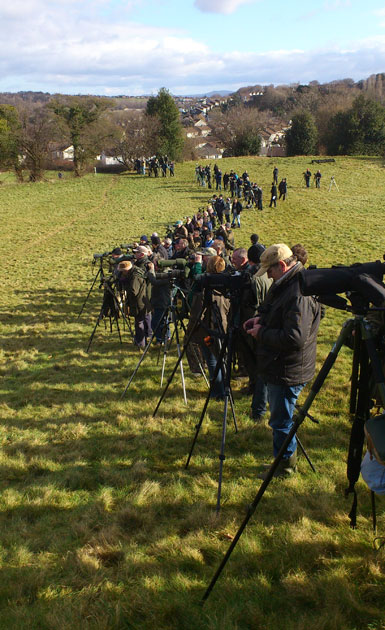
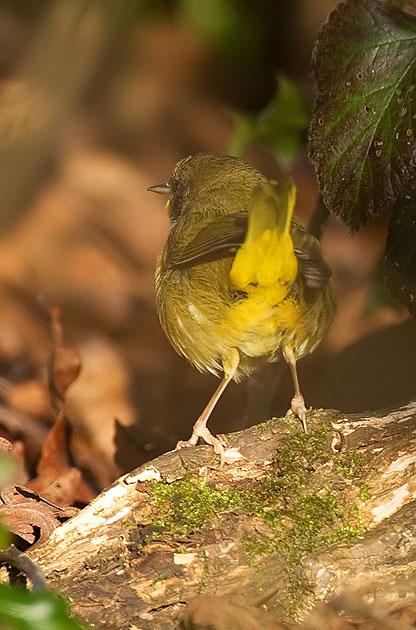
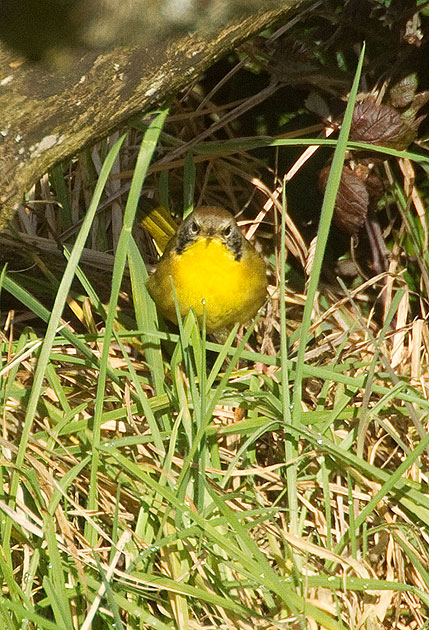
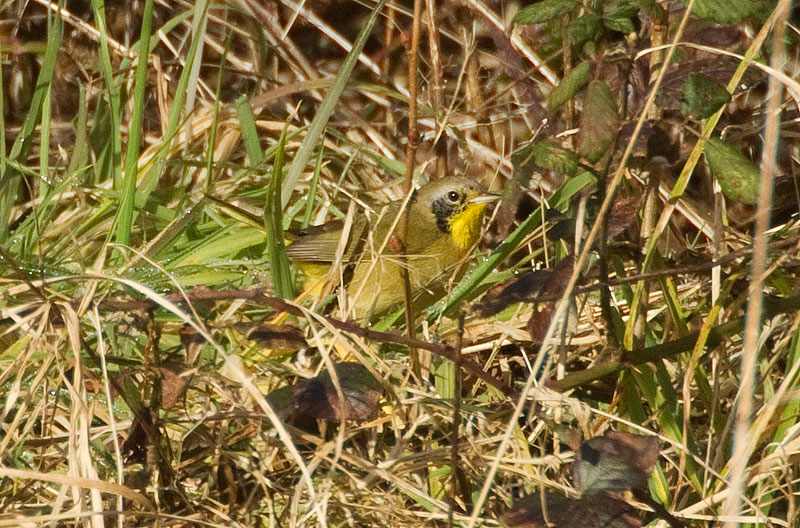
Later I went to catch up with the Richardson's cackling goose at Torr Reservoir, having missed it on two previous visits. This is the bird that first appeared at Blagdon Lake on 1 November and a second bird appeared around the same time in Gwent, potentially making the birds good candidates for autumn vagrants. The goose moved briefly to Chew, and then settled at Torr Reservoir in Somerset. If it is a wild bird, it might move off on migration any time, so I guessed I should try and see it. Separation of Canada geese into species is problematic, but there's little doubt now that the tiny cackling geese Branta hutchinsii are a separate species from the much larger B. canadensis, and both species are split into a number of subspecies. Its odd how the more northern taxa of Canada geese are smaller than more southern forms (see map by Michael O'Keefe at Irish Rare Birds Committee web site). A good description of the taxa and their intergrades is given here. The Torr bird is thought to be Richardson's cackling goose, Branta h. hutchinsii which normally nests in Arctic Canada and winters mainly in Texas and Mexico. Apart from being tiny (smaller than the barnacle geese there) It is darker breasted than the Canada geese and has a narrow white neck ring.
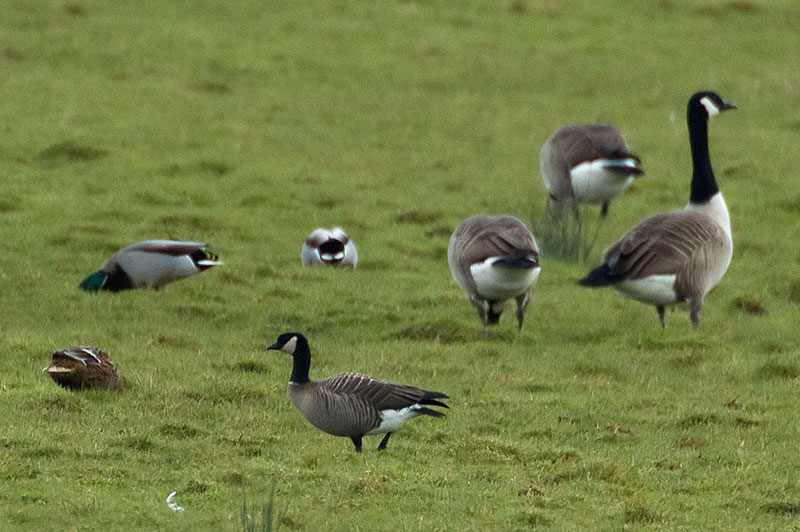
17th. A late morning trip to see the COMMON YELLOWTHROAT at Rhiwderin, west of Newport. We missed the bird when it was in an isolated patch of bushes by about 10 minutes. We had limited time and on the way back to the car the bird flew out of a hedge into a shrub in front of me at close range, though I only saw its back. It was also ''tschat' calling when in the hedge.
11th. A fantastic afternoon at Chew Valley Lake in glorious sunshine. First stop was Herriot's Bridge, where the redhead smew was swimming in the channel north of the road, giving great views against beautiful backgrounds. The lores look black, suggesting it is an adult female? I then went to Stratford Hide, and found a party of warblers patrolling the reed bed south of the hide. There were are least two chiffchaffs present (one seen earlier had given classic collybita calls), and one of the warblers was the yellow-browed warbler, which eventually settled in a patch of reeds in front of the hide, but which was too distant for decent photos.
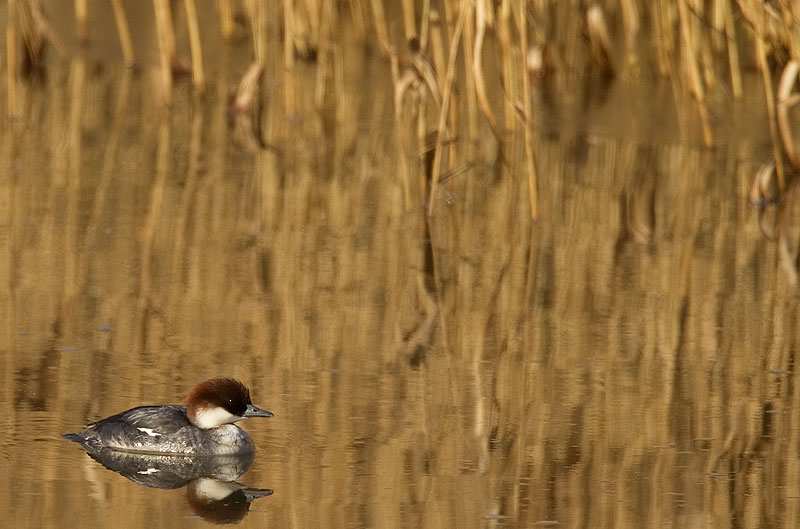
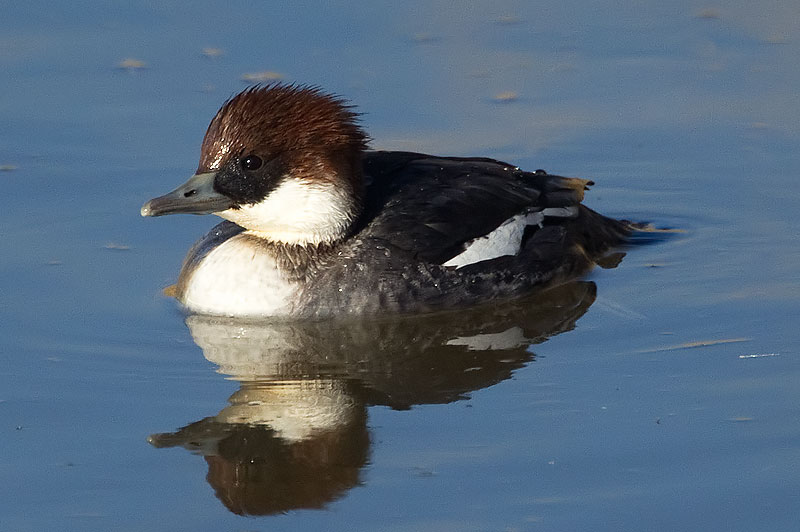
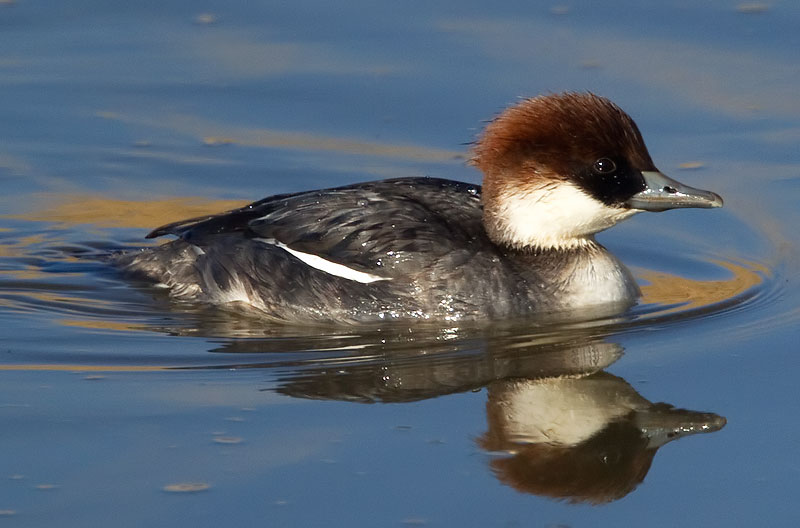
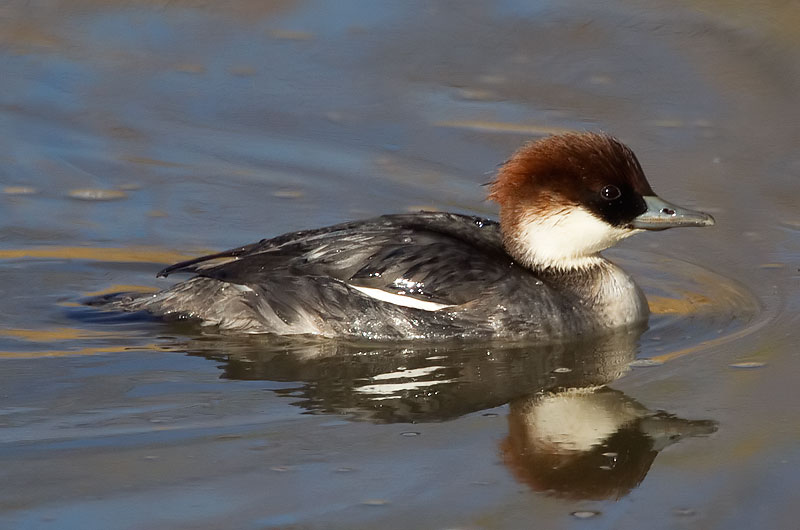
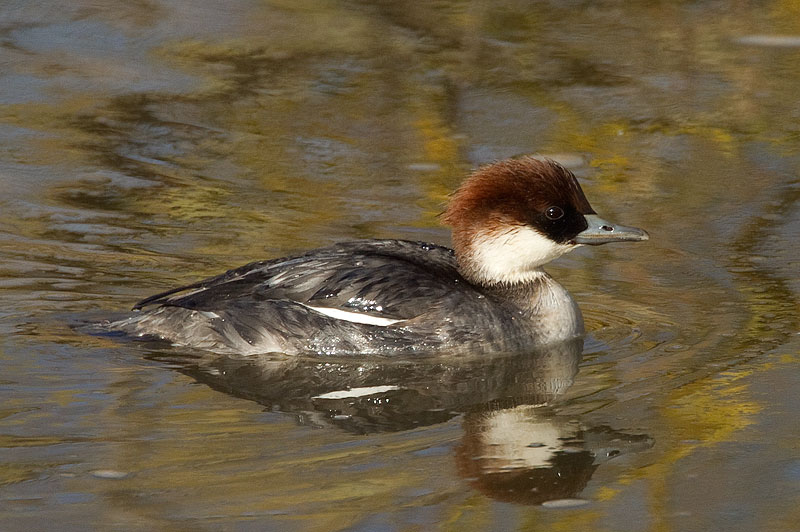
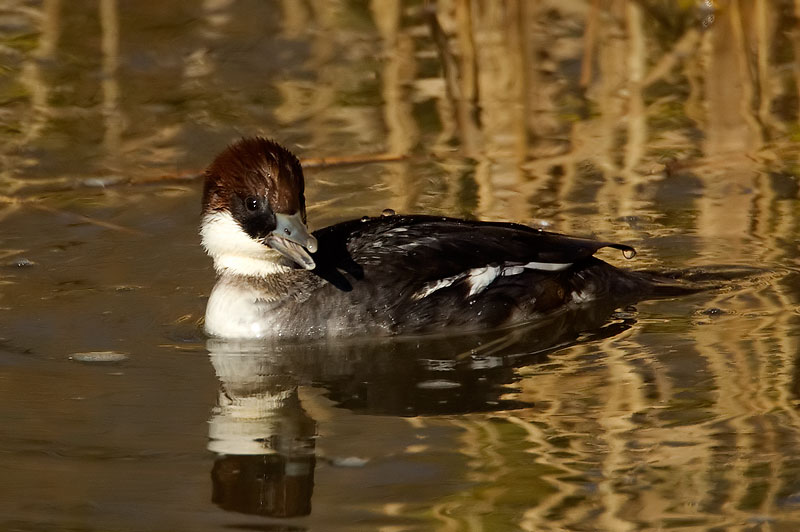
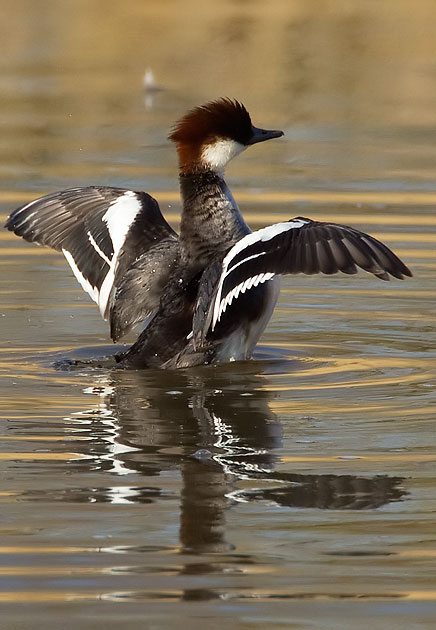
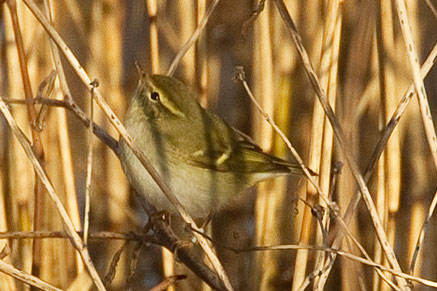
The tame Egyptian goose is still present at the picnic area.
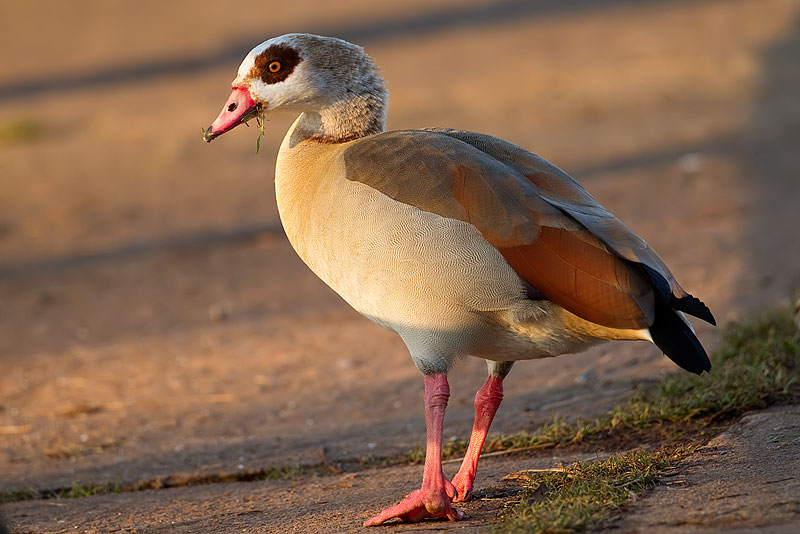
Finally, I returned to Herriot's Bridge, and had stunning views of the spotted sandpiper as it walked in front of me along the icy shore, then settling on the overflow for a while. I had to push the ISO to 1000 to get sharp photos. I heard a green sandpiper calling as dusk fell.
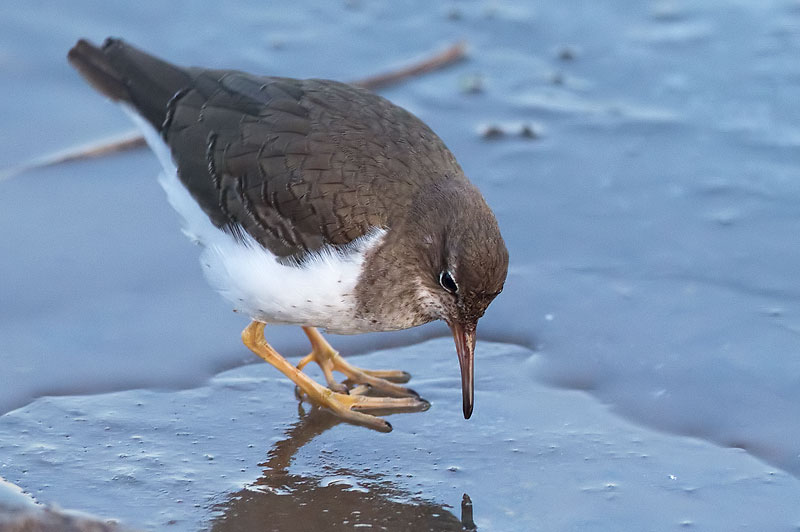
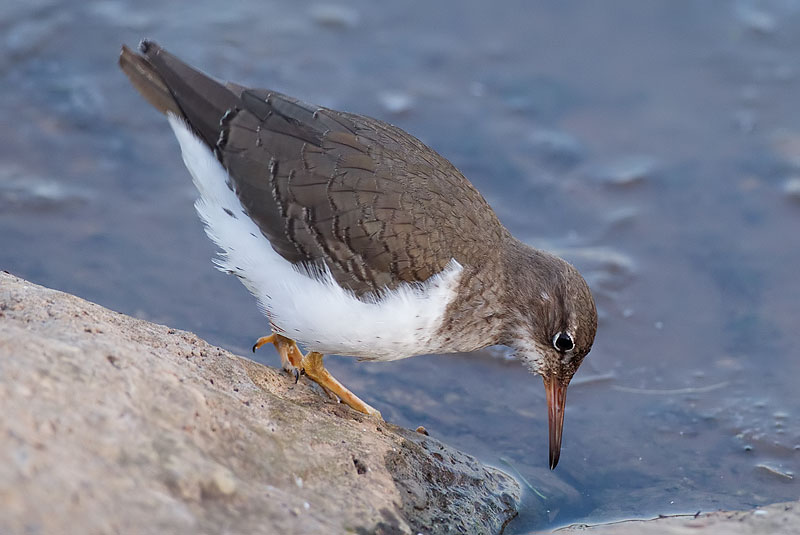
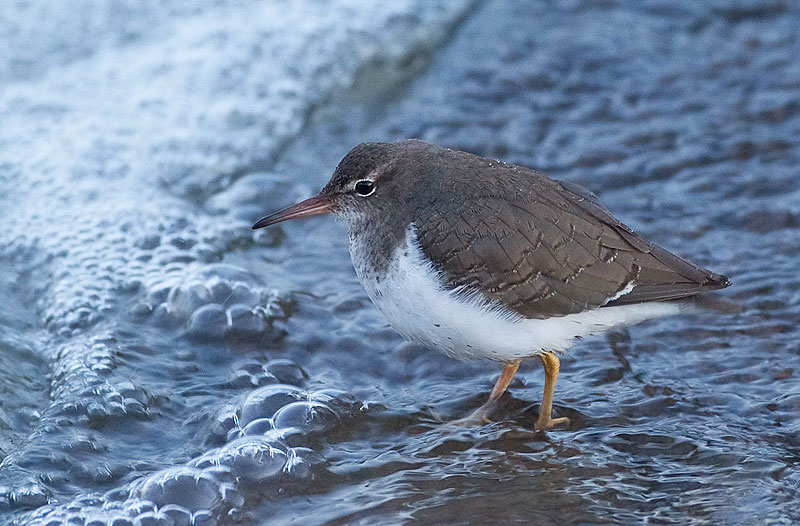
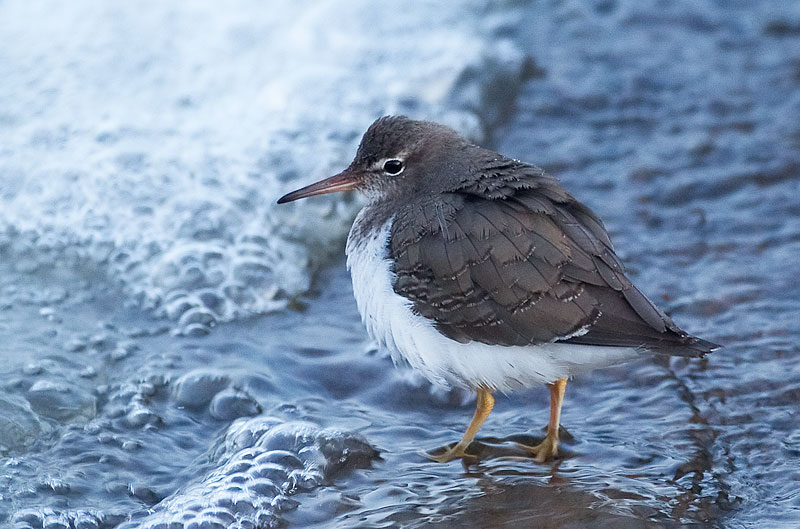
5th. I didn't see the yellow-browed warbler around Stratford Hide at Chew, only a very brown chiffchaff, 2 treecreepers, a flycatching goldcrest, and a Chew scarcity - a singing nuthatch. There has been a chiffchaff thought to be a tristis in the area, which may be the bird I saw. A couple of out of focus shots of the bird I saw showed many classic tristis features - black bill and legs, generally buff colour including flanks,and buff in the supercilium and ear coverts. There is a slight hint of some green in the wings however, and this is also the case (to an even more extreme degree) for a bird that might be a tristis at Chard sewage works - see James Packer's photo here. Hopefully the birds will call at some point, confirming their identity.
4th. A day to myself, so I headed to the Exe Estuary in awful weather. An Atlantic front arrived and hit the wall of cold air that had been settled over Britain, so much of central and eastern parts got heavy snow. In Devon it was cold, windy and rainy though. Highlights were many avocets at Topsham, peregrine stooping at a buzzard at Exminster marshes, red-breasted goose with large numbers of dark-bellied brent geese on the estuary, female surf scoter, ca. 20 common scoter and a Slavonian grebe off the seafront at Dawlish Warren. The light was too bad to find the American wigeon at Dawlish Warren, though it has relocated here now that Bowling Green Marsh had frozen over. The morning light created nice conditions to photograph avocets at Topsham on an icy estuary. Amazing how the bill is bent in the bottom right shot.
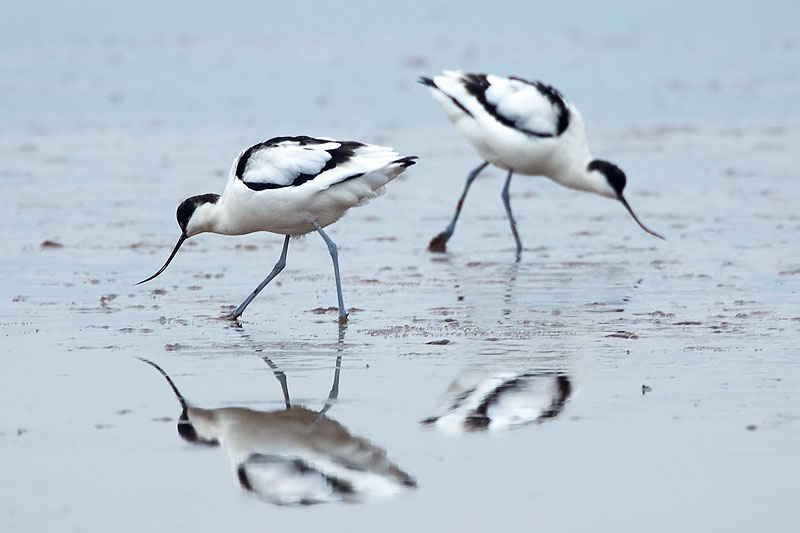
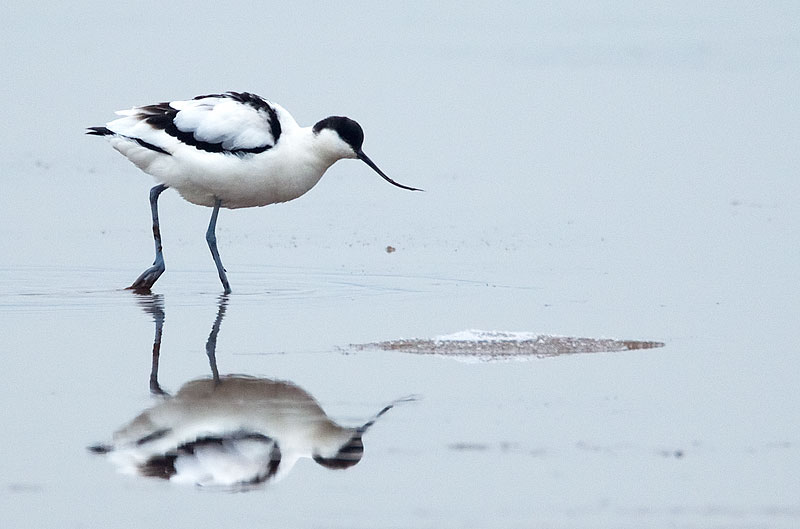
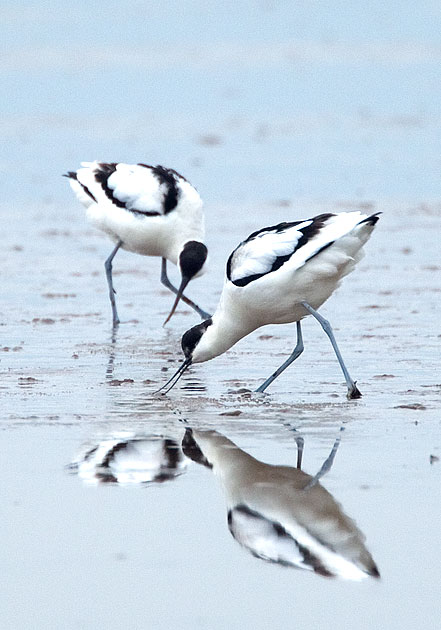
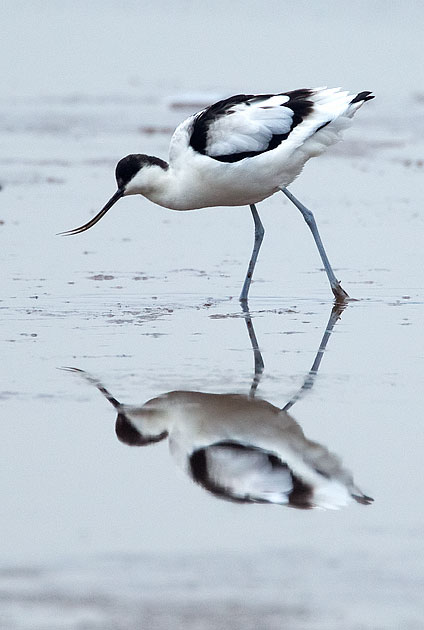
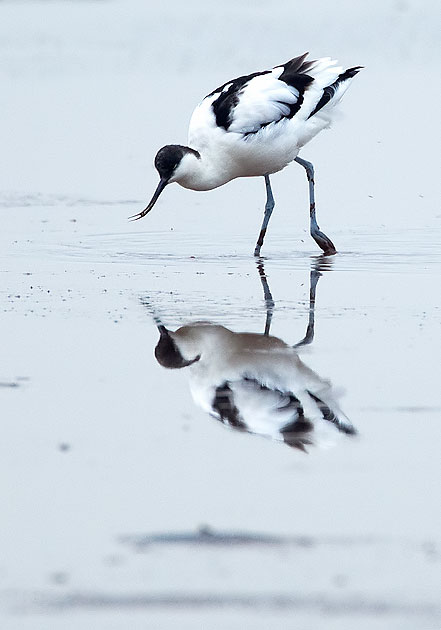
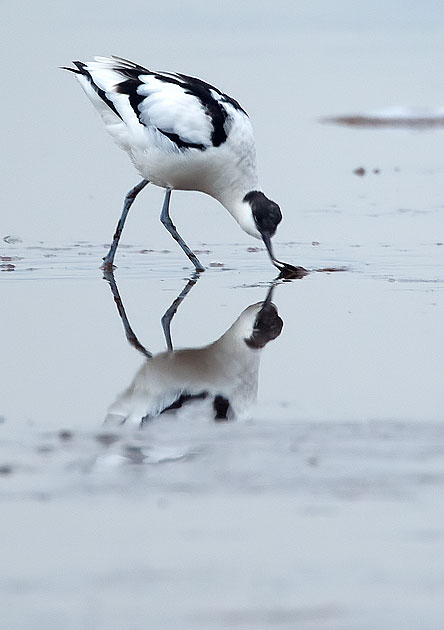
1st. High tide at Portishead was at lunchtime today, so I went to see the purple sandpipers on a sunny day, hoping to photograph them actually looking purple. I saw 3 birds, though they were very difficult to locate at first. Eventually they appeared and started feeding close to me, before settling down to roost. Two rock pipits were also present, and a male black redstart was on the rocky beach next to the fishermans' pier at Portishead Marina.
